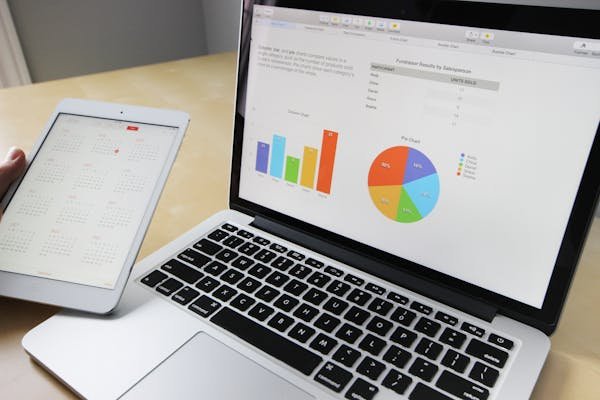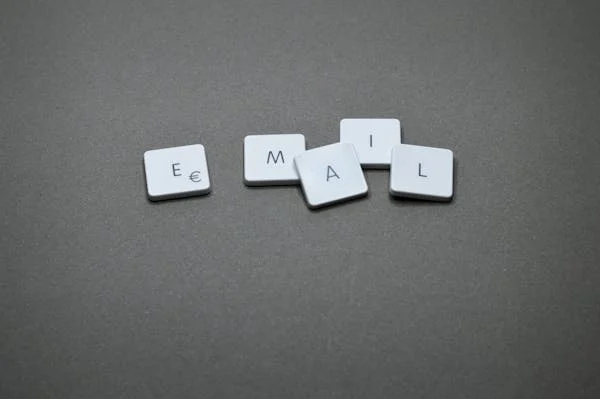In the digital age, email marketing remains one of the most powerful tools for engaging with your audience and driving conversions. When executed correctly, email campaigns can deliver personalized messages directly to your customers’ inboxes, build lasting relationships, and significantly boost your return on investment (ROI). This article will explore a variety of effective mailing strategies that can elevate your marketing campaigns, ensuring your messages are not only opened but also inspire action. Let’s dive into actionable tactics that can help you create compelling email marketing campaigns that resonate with your audience.
Building a Quality Email List
Starting with Opt-In Forms
The foundation of a successful email marketing campaign is a high-quality email list. Start by creating opt-in forms on your website and social media platforms to encourage visitors to subscribe. Offer incentives like exclusive content, discounts, or free resources to entice sign-ups.
Ensure your forms are simple and easy to fill out, asking only for essential information such as name and email address. Placement of these forms is crucial—consider adding them to high-traffic areas like your homepage, blog posts, and landing pages.
Using Lead Magnets
Lead magnets are valuable resources you offer in exchange for an email address. They can be e-books, whitepapers, checklists, or webinars that provide significant value to your audience. Ensure your lead magnets are relevant to your target audience and solve a specific problem they face.
For example, if you’re targeting small business owners, an e-book on “10 Strategies to Boost Your Online Presence” can be highly attractive. Promote these lead magnets through your website, social media, and paid ads to capture more leads.
Running Contests and Giveaways
Contests and giveaways are excellent strategies to grow your email list quickly. Encourage participants to enter by providing their email addresses. Make the prizes relevant to your audience to attract genuinely interested subscribers.
For example, if you’re a fitness brand, offering a free workout gear set can attract fitness enthusiasts to your list. Promote your contest through various channels, including social media, your website, and partner networks, to maximize reach.
Crafting Compelling Content

Personalizing Your Emails
Personalization goes beyond just addressing your subscribers by their first names. Use the data you have about your subscribers to tailor content that resonates with their interests and behaviors. Segment your email list based on factors such as purchase history, engagement levels, and preferences.
For example, if a subscriber frequently purchases skincare products, send them emails about new skincare launches, tips, and exclusive offers. Personalized emails have higher open and click-through rates, making your campaigns more effective.
Writing Engaging Subject Lines
The subject line is the first thing recipients see, and it significantly influences whether they open your email. Craft subject lines that are concise, compelling, and relevant to the content inside. Use action words, create a sense of urgency, and personalize where possible.
For example, “Exclusive Offer Just for You” or “Last Chance to Save 20% Today” can pique curiosity and prompt opens. A/B testing different subject lines can help you determine what resonates best with your audience.
Creating Valuable Content
Content is king in email marketing. Ensure your emails provide value to your subscribers, whether it’s through informative articles, useful tips, or exclusive offers. Keep your content relevant to the interests and needs of your audience.
For instance, if you’re a travel company, share travel guides, packing tips, or special discounts on travel packages. High-quality content not only keeps your audience engaged but also positions your brand as an authority in your industry.
Using Visuals Wisely
Visual content can enhance the appeal of your emails and make them more engaging. Use high-quality images, infographics, and videos to break up text and add visual interest. Ensure your visuals are relevant to the content and support your message.
For example, if you’re promoting a new product, include images and a short video demonstration. Remember to optimize your visuals for faster loading times and mobile compatibility, as many users will view your emails on their phones.
Segmenting Your Audience
Understanding Segmentation
Segmentation involves dividing your email list into smaller, more targeted groups based on specific criteria. This allows you to send more relevant and personalized content to each group, increasing engagement and conversion rates.
Common segmentation criteria include demographics, past purchase behavior, engagement levels, and preferences. For example, you can segment your list into new subscribers, frequent buyers, and inactive users, tailoring your messages to each group’s unique needs and behaviors.
Behavioral Segmentation
Behavioral segmentation focuses on how subscribers interact with your emails and website. Track actions such as open rates, click-through rates, and purchase history to create segments.
For instance, you might create a segment for subscribers who frequently click on links related to a particular product category and send them targeted promotions for that category. Behavioral segmentation allows you to deliver highly relevant content that resonates with each subscriber’s interests and increases the likelihood of conversion.
Demographic Segmentation
Demographic segmentation involves grouping subscribers based on characteristics such as age, gender, location, and income level. This information can help you tailor your messaging and offers to appeal to different demographic groups.
For example, if you know a segment of your audience consists of young professionals, you can send them content related to career development and productivity tips. Demographic segmentation helps you ensure that your messages are relevant and engaging for each group.
Geographic Segmentation
Geographic segmentation is particularly useful for businesses with a physical presence or those offering location-based services. Group subscribers based on their location and send them region-specific content and offers.
For example, a retail chain could send store opening announcements or local event invitations to subscribers in specific areas. Geographic segmentation ensures that your emails are relevant to the recipient’s location, increasing the likelihood of engagement.
Optimizing Email Design
Prioritizing a Clear Layout
A clear and organized layout is essential for creating effective emails. Start with a single-column design, which is easier to read on both desktop and mobile devices. Ensure that your email has a logical flow, guiding the reader from the headline to the call-to-action (CTA).
Use headers and subheaders to break up sections, making it easier for readers to scan the content quickly. For example, a well-structured email might begin with an engaging image or headline, followed by a brief introduction, key points in a digestible format, and a prominent CTA.
Enhancing Readability with White Space
White space, or negative space, is the empty area around your content. It helps reduce visual clutter and makes your emails more readable and aesthetically pleasing.
Strategically use white space to separate different sections of your email, allowing your readers to focus on one element at a time. For instance, space out your paragraphs and images to avoid a cramped look. This not only improves readability but also highlights your key messages more effectively.
Consistent Branding
Consistency in branding across your emails is crucial for brand recognition and trust. Use your brand’s colors, fonts, and logos consistently throughout your emails. This creates a cohesive look and feel, reinforcing your brand identity.
For example, if your brand uses a specific color palette and font on your website and social media, ensure these elements are reflected in your email design. Consistent branding helps build a stronger connection with your audience and makes your emails instantly recognizable.
Visual Hierarchy
Visual hierarchy is about arranging elements in a way that naturally guides the reader’s eye to the most important parts first. Use size, color, and positioning to create a clear visual hierarchy. Headlines should be larger and bolder than body text, and CTAs should stand out with contrasting colors.
For example, use a large, eye-catching headline at the top of your email to grab attention, followed by smaller subheadings and body text. Place your CTA button in a prominent position, such as above the fold, to ensure it’s immediately visible.
Interactive Elements
Interactive elements can make your emails more engaging and encourage recipients to interact with your content. Consider incorporating elements like image carousels, clickable tabs, or even gamified experiences.
For example, an email for a new product launch could include an image carousel showcasing different product angles or features. Interactive elements not only capture attention but also provide a richer experience, increasing the likelihood of clicks and conversions.
High-Quality Images and Videos
High-quality images and videos can significantly enhance the visual appeal of your emails. Use professional photography and well-produced videos to showcase your products or services. Ensure that all visuals are relevant to the content and support your message.
For example, a promotional email for a new clothing line should include high-quality images of the products being worn in various settings. Videos can be used to provide tutorials, product demonstrations, or customer testimonials, making your emails more dynamic and engaging.
Accessibility Considerations
Designing accessible emails ensures that all recipients, including those with disabilities, can engage with your content. Use alt text for images so that screen readers can describe them to visually impaired users. Ensure sufficient color contrast between text and background to aid readability for those with visual impairments.
Use semantic HTML to structure your email content, making it easier for screen readers to navigate. For example, instead of using images for buttons, use HTML buttons with descriptive text, ensuring all users can interact with your CTAs.
Minimalistic Design
A minimalistic design approach can make your emails more effective by eliminating unnecessary elements that can distract or overwhelm your audience. Focus on delivering a clear message with concise text and a straightforward layout.
For instance, use a clean design with ample white space, a single compelling image, and a strong CTA. Minimalistic designs can enhance the user experience by making it easier for readers to focus on the key message and take the desired action.
Effective Use of Colors
Colors play a crucial role in evoking emotions and influencing behavior. Use colors strategically to enhance your email design and guide readers’ actions. For example, use your brand colors to maintain consistency and build recognition, but also incorporate contrasting colors for CTAs to make them stand out.
Avoid using too many colors, which can create a chaotic look. Instead, stick to a limited color palette that aligns with your brand and highlights important elements.
Typography
Typography is another critical element in email design. Choose fonts that are easy to read on all devices, including mobile. Use a combination of font sizes to create a visual hierarchy, with larger fonts for headlines and smaller fonts for body text.
Ensure there is enough spacing between lines (line height) and between letters (letter spacing) to enhance readability. For example, using a large, bold font for your headline and a clean, sans-serif font for your body text can create a balanced and professional look.
Testing Across Devices and Email Clients
To ensure your emails look great and function properly for all recipients, test them across various devices and email clients. Different devices and email clients can render emails differently, so it’s essential to check how your design appears on desktops, tablets, smartphones, and different email platforms like Gmail, Outlook, and Apple Mail.
Use email testing tools to preview your emails and identify any issues. For example, test your email’s responsiveness, image load times, and CTA functionality to ensure a seamless experience for all users.
Implementing Dark Mode Compatibility
With the increasing popularity of dark mode on various devices and email clients, it’s essential to ensure your emails are compatible. Dark mode displays light-colored text on a dark background, which can affect how your emails appear.
To optimize for dark mode, use transparent PNG images, avoid pure black text, and use colors that adapt well to both light and dark backgrounds. For example, test your emails in dark mode and make necessary adjustments to ensure readability and visual appeal.
Timing and Frequency
Understanding Subscriber Behavior
To determine the optimal timing for your emails, start by understanding your subscribers’ behavior. Analyze historical data to identify patterns in how and when your audience engages with your emails.
Look at metrics such as open rates, click-through rates, and conversion rates across different times of day and days of the week. This analysis can help you identify peak engagement periods. For instance, you might discover that your audience is more likely to open emails during weekday mornings rather than weekends.
Conducting A/B Testing
A/B testing, or split testing, is a powerful method for determining the best time to send your emails. Create two versions of your email and send them at different times to different segments of your audience. Compare the results to see which time yields better engagement.
For example, you could test sending an email at 8 AM versus 1 PM to see which time results in higher open and click-through rates. Continuous testing helps you refine your timing strategy and adapt to changing audience behaviors.
Leveraging Time Zones
For businesses with a global audience, sending emails at the right local time for each subscriber is crucial. Segment your email list by time zone and schedule your emails to be sent at optimal times in each region.
This ensures that your emails arrive when subscribers are most likely to be checking their inbox. For example, if you’re targeting both North American and European audiences, send emails during morning hours in each respective time zone to maximize engagement.
Utilizing Automated Workflows
Automated workflows can help you send timely and relevant emails based on subscriber actions. Set up triggers to automatically send emails when subscribers take specific actions, such as signing up for your newsletter, abandoning a cart, or making a purchase.
For instance, an automated welcome series can send a welcome email immediately after signup, followed by a series of educational and promotional emails over the next few days. Automation ensures that your emails reach subscribers at the most opportune moments, enhancing the customer journey.
Segmenting Based on Engagement Levels
Segment your email list based on engagement levels to tailor your timing and frequency. Identify highly engaged subscribers who frequently open and interact with your emails, and consider sending them more frequent updates and exclusive offers.
Conversely, for less engaged subscribers, space out your emails to avoid overwhelming them and consider re-engagement tactics. For example, a segment of highly engaged users might receive weekly newsletters, while less engaged users receive bi-weekly or monthly updates with special incentives to re-engage.

Seasonality and Special Events
Adjust your email timing and frequency based on seasonality and special events. During holiday seasons or major sales events, consumers are more receptive to frequent emails. Plan your email campaigns around these periods to capitalize on heightened interest.
For instance, increase the frequency of your emails during the holiday shopping season with special promotions, gift guides, and countdowns to key dates. Additionally, send reminder emails leading up to special events to create anticipation and urgency.
Monitoring and Adjusting Based on Metrics
Regularly monitor your email performance metrics to ensure your timing and frequency are effective. Key metrics to watch include open rates, click-through rates, conversion rates, and unsubscribe rates. If you notice a decline in engagement or an increase in unsubscribes, it may be a sign that you need to adjust your email frequency or timing.
For example, if your unsubscribe rate spikes after increasing email frequency, consider reducing the number of emails you send. Continuously analyzing these metrics allows you to make data-driven decisions and optimize your email strategy.
Personalizing Send Times
Take personalization a step further by using machine learning and AI to predict the best send times for individual subscribers. Some email marketing platforms offer predictive send-time optimization, which analyzes each subscriber’s past behavior to determine the optimal time to send emails.
Implementing this technology can increase the likelihood that your emails are opened and engaged with, as they are sent at the most convenient times for each recipient. For example, if a subscriber consistently opens emails in the evening, the system will automatically schedule future emails to be sent during that time.
Consistency in Email Scheduling
Maintaining a consistent email schedule helps build anticipation and reliability with your audience. Choose a regular frequency that aligns with your content strategy and stick to it. Whether it’s weekly newsletters, monthly updates, or bi-weekly promotions, consistency helps subscribers know when to expect your emails.
This regularity can improve open rates as subscribers become accustomed to your schedule. For example, if you send a newsletter every Wednesday morning, subscribers will begin to anticipate and look forward to receiving it.
Respecting Subscriber Preferences
Allow subscribers to choose their preferred email frequency through preference centers. Provide options for daily, weekly, bi-weekly, or monthly emails, and tailor your sending frequency based on their choices.
Respecting subscriber preferences enhances the user experience and reduces the likelihood of unsubscribes. For example, include a link in your emails to a preference center where subscribers can adjust their settings, ensuring they receive content at a frequency that suits them.
Experimenting with Different Campaign Types
Different types of email campaigns may require different timing and frequencies. Experiment with various campaign types such as newsletters, promotional emails, transactional emails, and re-engagement campaigns to determine the best approach for each.
For example, promotional emails might be sent more frequently during a sale period, while newsletters could be sent on a regular weekly schedule. Understanding the unique requirements and goals of each campaign type helps you optimize timing and frequency for maximum impact.
Leveraging Behavioral Data
Use behavioral data to inform your timing and frequency strategies. Analyze how subscribers interact with your website, app, and previous emails to identify optimal engagement times.
For example, if you notice that a segment of your audience frequently visits your website on weekends, consider scheduling emails to coincide with this behavior. Leveraging behavioral data allows you to create a more personalized and effective email marketing strategy.
Analyzing and Measuring Success
Defining Key Performance Indicators (KPIs)
To effectively measure the success of your email marketing campaigns, start by defining clear Key Performance Indicators (KPIs) that align with your business goals. These KPIs could include open rates, click-through rates, conversion rates, bounce rates, and unsubscribe rates.
For startup founders, it’s crucial to set specific, measurable, achievable, relevant, and time-bound (SMART) goals for each campaign. For instance, you might aim to increase your open rate by 10% within three months or achieve a 5% conversion rate on a new product launch campaign.
Utilizing Advanced Analytics Tools
Leverage advanced analytics tools to gain deeper insights into your email campaign performance. Platforms like Google Analytics, HubSpot, and Mailchimp offer robust tracking and reporting features. Use these tools to track user behavior from the moment they open your email to when they complete a purchase or take another desired action.
By analyzing this data, you can identify patterns and trends that inform your future strategies. For example, if you notice that emails sent on Tuesdays have higher engagement rates, adjust your sending schedule accordingly.
Conducting Cohort Analysis
Cohort analysis allows you to group your subscribers based on shared characteristics or behaviors and analyze their actions over time. This method can help you understand how different segments of your audience respond to your campaigns and identify opportunities for optimization.
For instance, you could group subscribers who signed up during a specific promotional period and compare their engagement and conversion rates with those who signed up at other times. This analysis can reveal valuable insights into the effectiveness of your promotional efforts and guide future campaigns.
Tracking Customer Lifetime Value (CLV)
Customer Lifetime Value (CLV) is a critical metric that helps you understand the long-term value of your subscribers. By tracking CLV, you can determine which segments of your audience are most valuable and tailor your marketing efforts to maximize their lifetime value.
For example, if you identify that subscribers who purchase within the first month have a higher CLV, focus on nurturing new subscribers with targeted offers and personalized content during their initial engagement period. This strategic approach can increase retention and drive higher revenue over time.
Analyzing Engagement Over Time
Track how engagement with your emails changes over time to identify trends and potential areas for improvement. Look at metrics such as open rates, click-through rates, and conversion rates across different time periods to understand how your audience’s behavior evolves.
For example, if you notice a decline in engagement after a certain number of emails, consider implementing re-engagement strategies to keep your audience interested. This could involve sending a survey to understand their preferences better or offering exclusive content to reignite their interest.
Monitoring Revenue Attribution
Revenue attribution involves linking your email campaigns to actual sales and revenue generated. Use analytics tools to track which emails lead to conversions and revenue. This helps you understand the direct impact of your email marketing efforts on your bottom line.
For example, if a specific email campaign drives a significant number of sales, analyze the elements that contributed to its success, such as the subject line, content, and timing. Use these insights to replicate successful strategies in future campaigns.
Evaluating Campaign ROI
Calculating the Return on Investment (ROI) of your email campaigns is essential for understanding their financial effectiveness. To calculate ROI, subtract the cost of your email marketing efforts (including tools, design, and time) from the revenue generated, then divide by the cost.
For example, if a campaign cost $500 and generated $2,500 in revenue, your ROI would be 400%. Regularly evaluating ROI helps you determine which campaigns are most cost-effective and guides your budgeting decisions for future campaigns.
Conducting A/B Testing
A/B testing is a crucial strategy for optimizing your email campaigns. Test different elements of your emails, such as subject lines, content, CTAs, and send times, to see what resonates best with your audience.
Analyze the results of these tests to identify the most effective strategies and implement them in your future campaigns. For example, if an A/B test reveals that a personalized subject line significantly increases open rates, incorporate personalization into all your subject lines to enhance engagement.
Leveraging Heat Maps
Heat maps provide a visual representation of how subscribers interact with your emails, highlighting areas where they click most frequently. Use heat maps to understand which parts of your email capture the most attention and optimize your design accordingly.
For instance, if a heat map shows that subscribers rarely click on links at the bottom of your emails, consider moving important links and CTAs to more prominent positions. This strategic use of heat maps can improve the overall effectiveness of your email layout and content.
Gathering Qualitative Feedback
In addition to quantitative metrics, gather qualitative feedback from your subscribers to gain deeper insights into their preferences and experiences. Send surveys or ask for feedback directly in your emails to understand what your audience likes and dislikes about your campaigns.
For example, include a simple question at the end of your email asking, “How did you find this content?” or “What would you like to see more of?” Use this feedback to make informed adjustments to your content and strategy.
Benchmarking Against Industry Standards
Compare your email campaign performance against industry benchmarks to understand how you stack up against competitors. Look at metrics such as open rates, click-through rates, and conversion rates for your industry to identify areas where you excel and areas that need improvement.
For example, if your open rates are below the industry average, focus on optimizing your subject lines and send times. Benchmarking helps you set realistic goals and continuously improve your email marketing efforts.
Implementing Predictive Analytics

Predictive analytics uses historical data and machine learning to forecast future subscriber behavior. Implement predictive analytics to identify which subscribers are most likely to engage with your emails or make a purchase.
Use these insights to tailor your campaigns and target high-potential segments with personalized content and offers. For example, if predictive analytics indicate that certain subscribers are likely to churn, send them re-engagement emails with special incentives to retain them.
Reviewing Campaign Reports
Regularly review detailed campaign reports to track the performance of your email marketing efforts. These reports should include key metrics, such as open rates, click-through rates, conversion rates, and revenue generated.
Analyze these reports to identify trends, measure the effectiveness of your strategies, and make data-driven decisions. For example, if a report shows that a specific campaign had a high conversion rate, analyze the elements that contributed to its success and apply those learnings to future campaigns.
Continuous Learning and Improvement
Email marketing is an ever-evolving field, and staying updated with the latest trends and best practices is crucial for success. Invest in continuous learning through webinars, courses, industry blogs, and networking with other marketing professionals.
Apply new insights and techniques to your campaigns to keep them fresh and effective. For example, if you learn about a new email design trend that increases engagement, experiment with incorporating it into your next campaign.
Conclusion
Effective email marketing requires a comprehensive and strategic approach that encompasses building a quality email list, crafting compelling content, optimizing email design, understanding timing and frequency, and analyzing and measuring success. By implementing these strategies, you can create engaging and impactful email campaigns that resonate with your audience and drive conversions.
Understanding your target audience is the foundation of a successful email marketing campaign. Use opt-in forms, lead magnets, and contests to build a high-quality email list. Personalize your emails based on the data you collect and tailor your content to meet the specific needs and preferences of your subscribers.
Read Next:
- Proven Marketing Strategies for Contractors
- Creative Pinterest Name Ideas for Affiliate Marketers
- Festive Marketing Ideas for a 12-Day Christmas Campaign
- Creative Marketing Strategies for Yearbooks
- How to Market Sports Teams and Events






















Comments are closed.